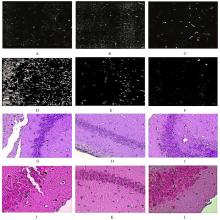Journal of Jilin University(Medicine Edition) ›› 2021, Vol. 47 ›› Issue (4): 842-848.doi: 10.13481/j.1671-587X.20210404
• Research in basic medicine • Previous Articles Next Articles
Effect of abdominal manipulation on remodeling of hippocampal neurons in chronic stress-induced chronic fatigue syndrome and its mechanism of negative feedback regulation of hippocampus-HPA axis
Mingzhu PAN,Jian LI,Bing RONG,Jun JIA,Huanan LI( )
)
- Department of Tuina,First Affiliated Hospital,Tianjin University of Traditional Chinese Medicine,Tianjin 300193,China
CLC Number:
- R244.1







